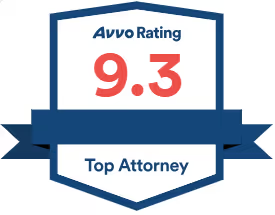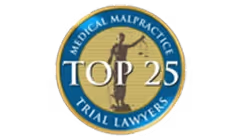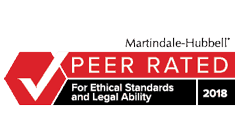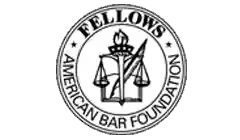A Dangerous Machine, A Meat Packing Plant & A Young Mom Who Suffered a Horrendous Injury
This is a story about how a difficult product liability case ended in a multimillion-dollar settlement for our client. This is also a story about fighting for justice for those who cannot fight for themselves. This is a story about corporate greed that prioritized profits over safety, reckless employers who valued productivity more than people, and an exploited immigrant mom who worked a grim job for low wages.
The Client, the Accident, and the Injury
“Maria Lopez” (my client’s real name is not used to protect her privacy) was a 30-year-old mother of 4 children and a Spanish-speaking immigrant from Ecuador. Maria was employed on the night shift in a meat processing plant as a machinery cleaner. She earned the minimum hourly wage and lived with her family in a basement apartment with one window to let in light. Maria was injured as she cleaned a meat blender while it was running as instructed by her employer. The employer directed Maria to clean the meat blender using a hose to spray highly pressurized hot water within close range of hazardous rotating steel blades. As Maria sprayed the hot water, steam and droplets obscured her vision. The hose got caught up in the high-speed rotating parts and was pulled into the meat blender along with her right hand. The hand was instantly severed. In a flash, Maria became a young mom with a devastating injury, horrendous disfigurement, and permanent disability.
This terrifying accident occurred because the machine was dangerously defective when sold to her employer only a few weeks before. The machine lacked safety devices and features that would have made it impossible for this accident to happen.
The Claims and the Parties
When I took on the case, we embarked on a mission to unravel the truth behind Maria’s accident. I was determined to prove that the accident occurred because the machine was unsafe and someone was responsible for its dangerous condition. Our investigation included inspecting the dangerous meat blender, interviewing witnesses, and getting documents related to the sale of the machine to Maria’s employer. We sued two parties: “ABC”, a Texas company that was the original designer, manufacturer, and distributor of the meat blender, and “XYZ”, a Nebraska corporation that sells new and reconditioned meat processing machines (the real names of the defendants are not used due to NDAs in the settlement agreements). Our complaint claimed that the defendants designed, manufactured, and sold a meat blender that was dangerously defective and failed to provide adequate warnings and safety instructions to the machine’s owners and users. Subsequently, XYZ brought a third-party claim against Maria’s employer, “QRS”, a New Jersey meat processing company based on an indemnification claim.
ABC originally designed the meat blender more than 20 years before the accident with “state-of-the-art” safety devices and features. The machine was designed to be equipped with “interlocks” on the safety guards which automatically shut down the machine when the guards were opened and hazardous moving parts were exposed. The machine also was designed to have warning labels near the chutes that expelled ground meat. Moreover, the machine was supposed to have operator’s manuals with safety instructions related to the interlocks and machine cleaning procedures. However, when XYZ sold the meat blender to QRS in 2019, the machine did not have interlocks on the safety guards, warning labels, or operator’s manuals. We claimed that ABC and XYZ were both responsible for the complete absence of state-of-the-art safety measures – interlocked guards, warning labels, and operator’s manuals – on the meat blender when it was sold to QRS. XYZ claimed that QRS directed Maria to clean the meat blender while the machine was running; therefore, QRS was exclusively responsible for the accident. Our response to XYZ’s claim was that, if it had installed interlocked guards on the meat blender before it was sold to QRS, Maria’s accident would have been impossible.
The Case Had Substantial Uncertainty and Risk When it Started, But Hard Work Made it into a Big Win for Maria and Us
Our case was fraught with uncertainty and risk that put the outcome in doubt when it was filed. Whether we would get justice for Maria depended on finding evidence demonstrating that either ABC or XYZ was responsible for the dangerous condition of the meat blender, the terrifying accident, and Maria’s horrendous injuries. The liability of ABC and XYZ was not readily apparent before the completion of depositions in the case because highly plausible defenses were asserted by the defendants. Other things stood in our way to success, too.
ABC’s Defense
ABC asserted a “modification defense” which meant that it had designed, manufactured, sold, and shipped the meat blender with an interlocked safety guard, warning labels, and operator’s manuals more than 20 years before the accident; however, the machine’s safety devices and warning labels had been removed by the previous owner and the operator’s manual had been lost or discarded before the machine was acquired by XYZ in 2015.
XYZ’s Defense
XYZ asserted an “as is” defense for the sale of the used meat blender. XYZ claimed that it sold the meat blender to QRS “as is” in an inoperable state, denied responsibility for its unsafe condition, and argued that QRS was responsible for making the machine safe. XYZ further argued that QRS knew what safety devices and features needed to be installed before the meat blender was put into operation. XYZ’s defense essentially meant that it sold a “useless heap of metal junk” (i.e., a “wreck”) to QRS; therefore, it had no control or responsibility over what the purchaser did with the machine.
QRS’s Defense
QRS relied on the “workers’ compensation bar” which prevents employees from suing their employers for workplace injuries and requires them to accept benefit payments for medical expenses and lost wages. Those payments are always insufficient compensation for the injured worker’s pain and suffering and financial losses.
The OSHA Findings
Finally, OSHA had investigated Maria’s accident and the investigation added another layer of complexity to the case. We served a FOIA request on OSHA and its file was disclosed to us. OSHA cited QRS for federal regulatory violations related to workplace safety and industrial machinery. OSHA’s investigation concluded that the employer, QRS, was entirely responsible for the accident.
Summarizing the Problem for Us
The claims against ABC and XYZ presented formidable defenses and any claims that we could make against QRS were barred by the workers’ compensation law. Moreover, our strict product liability claims conflicted with OSHA’s conclusion that QRS’s regulatory violations were the sole cause of the accident. There was a substantial risk that worker’s compensation benefits were Maria’s only remedy for her grievous injuries. We were uncertain whether the lawsuit could recover adequate compensation or achieve some measure of justice for Maria.
How I Destroyed the Defenses During the Case
As the case unfolded, I unearthed shocking revelations that shed new light on the matter. The new evidence destroyed the defenses of XYZ, QRS, and ABC. We demanded that ABC, XYZ, and QRS disclose materials related to the design, manufacture, sale, and shipping of the meat blender and Maria’s accident. The many items disclosed to us were very useful in attacking the defenses raised by XYZ, QRS, and ABC.
I took many depositions of the defendant’s employees and third-party defendant’s employees. The depositions of the employees revealed more compelling evidence establishing the liability of XYZ and QRS for Maria’s accident. The evidence also strengthened the claims that ABC was also responsible. The depositions revealed key evidence that exposed the outrageous truth about why and how Maria’s accident happened.
XYZ’s Shameless Greed Put Profit Over Safety
XYZ designed, manufactured, and sold all new and reconditioned meat processing machines, including meat blenders, with state-of-the-art safety devices and features such as interlocked safety guards, warning labels, and operator’s manuals with safety-related instructions. XYZ acquired the used meat blender from a prior owner in 2015 without any safety guards, interlocks, warning labels, or operator’s manual. The meat blender was in XYZ’s possession sitting outside its plant for four years before QRS inquired about purchasing a used meat blender. XYZ sold and shipped the meat blender to QRS for $35,000.00 without installing interlocked safety guards, applying warning labels, or providing the operator’s manual.
XYZ had the knowledge, ability, and opportunity to install state-of-the-art safety devices and features on the meat blender before selling it to QRS; however, it chose not to do so because its primary interest was in generating $35,000.00 revenue without incurring the minimal costs or expending the labor needed to make the machine safe. XYZ’s cost to provide the necessary safety devices and features for this meat blender was estimated to be $695.00. XYZ’s employees would have needed just a few hours to install the safety devices on the meat blender. During the depositions, it became startlingly clear to me – that XYZ had prioritized profit over safety when it came to the sale of this machine.
XYZ tested the meat blender to ensure that it was “operational” before consummating the sale to QRS. XYZ installed two non-interlocked replacement safety guards and repositioned a dislocated bearing cover before shipping the meat blender to QRS; therefore, the machine was not sold “as is”. Rather XYZ sold and shipped an operational “reconditioned” meat blender to QRS.
When the XYZ employees’ depositions concluded, it was indisputable that XYZ did not sell “a huge pile of metal junk” to QRS. Instead, XYZ sold QRS a fully operational meat blender that was not reasonably safe. The XYZ depositions eviscerated this defendant’s “as is” defense and made its liability irrefutable. Two things became self-evident: XYZ sold a dangerously defective machine with the knowledge that it presented a high risk of serious injury or death to workers. XYZ had made a huge profit in selling this “instrument of mayhem and mutilation”.
QRS Recklessly Put Production Over People
QRS admitted that it directed employees, including Maria, to clean the meat blender with the safety guards removed while it was running because the company managers believed that this was the quickest and easiest way to sanitize the machine. QRS admitted to the federal safety violations and paid a monetary penalty to OSHA. Moreover, QRS’s management was not aware that interlocked safety guards on meat blenders were required to meet OSHA regulations; they were not informed by anyone at XYZ that interlocks had to be installed. Finally, QRS’s management knew that directing workers, including Maria, to clean the meat blender when it was operating with the safety guards removed presented a high risk of injury and death. That last revelation enabled circumventing the workers’ compensation bar and bringing a direct claim against QRS for “intentional wrong”.
ABC Left it to the Customer to Correctly Assemble the Machine
ABC shipped the meat blender to its initial purchaser disassembled without the interlocks installed on the safety guard. The evidence indicated that ABC left it to the purchaser to properly assemble the meat blender, install the interlock, and connect the electrical circuits though that was disputed by the company. Regardless, even if ABC negligently left installation of the interlocks to its customer, we realized that XYZ’s sale of the meat blender with two non-interlocked replacement safety guards 20 years later and QRS’s removal of the guards during cleaning could be found supervening or intervening causes by the court that prevented ABC from being held liable for the accident.
The Keys to Success: Knowledge, Experience, Expertise & Hard Work
I have worked on product liability cases for more than 30 years. I know what it takes to make these difficult and complex cases successful. The development of the crucial evidence in this case that led to the excellent outcome for Maria required my specialized knowledge, experience, expertise, and understanding of the many subjects that arise in cases about serious injuries caused by complex industrial machinery. Some of those subjects are engineering design principles and practices; the “engineering safety pyramid”; industrial machinery guarding methods; OSHA regulations; and the medical treatment, complications, and disabilities suffered by severely injured workers. Our dedication to the cause of justice for Maria made us relentlessly pursue the truth about why this terrible accident happened and who was responsible for it. In my view, those characteristics proved to be what made the case hugely successful.
The Story Ends in a Multimillion Dollar Settlement & Justice for Maria
Once depositions concluded and the “handwriting was on the wall” for the defendants, the federal judge presiding over the case convened a conference to discuss settlement. At the conference, the defendants’ attorneys asked if we were interested in mediation with a former judge known to all sides. We agreed to mediate the case since all parties had motives to resolve the case before expert discovery began.
After three in-person mediation sessions and numerous phone calls between the mediator and the attorneys and the attorneys with each other, a breakthrough in negotiations was achieved. The parties reached a global multimillion-dollar settlement that compensated Maria over her lifetime for the catastrophic injuries that she suffered because of the defendant’s wrongdoing. The settlement provides justice for Maria. We are gratified to know that our client’s future will be secure because of our work on this case.
I wish to thank the members of my team who helped make this case a big success: Bradley S. Zimmerman, Esq., Jaehyun Oh, Esq., Hardeep Shergill, Esq., Rhonda Sanchez, Andrew Lanni, Jacqueline Cabrera, Arleen Rivera, and Anya Pomales-Vasquez.

.svg)









